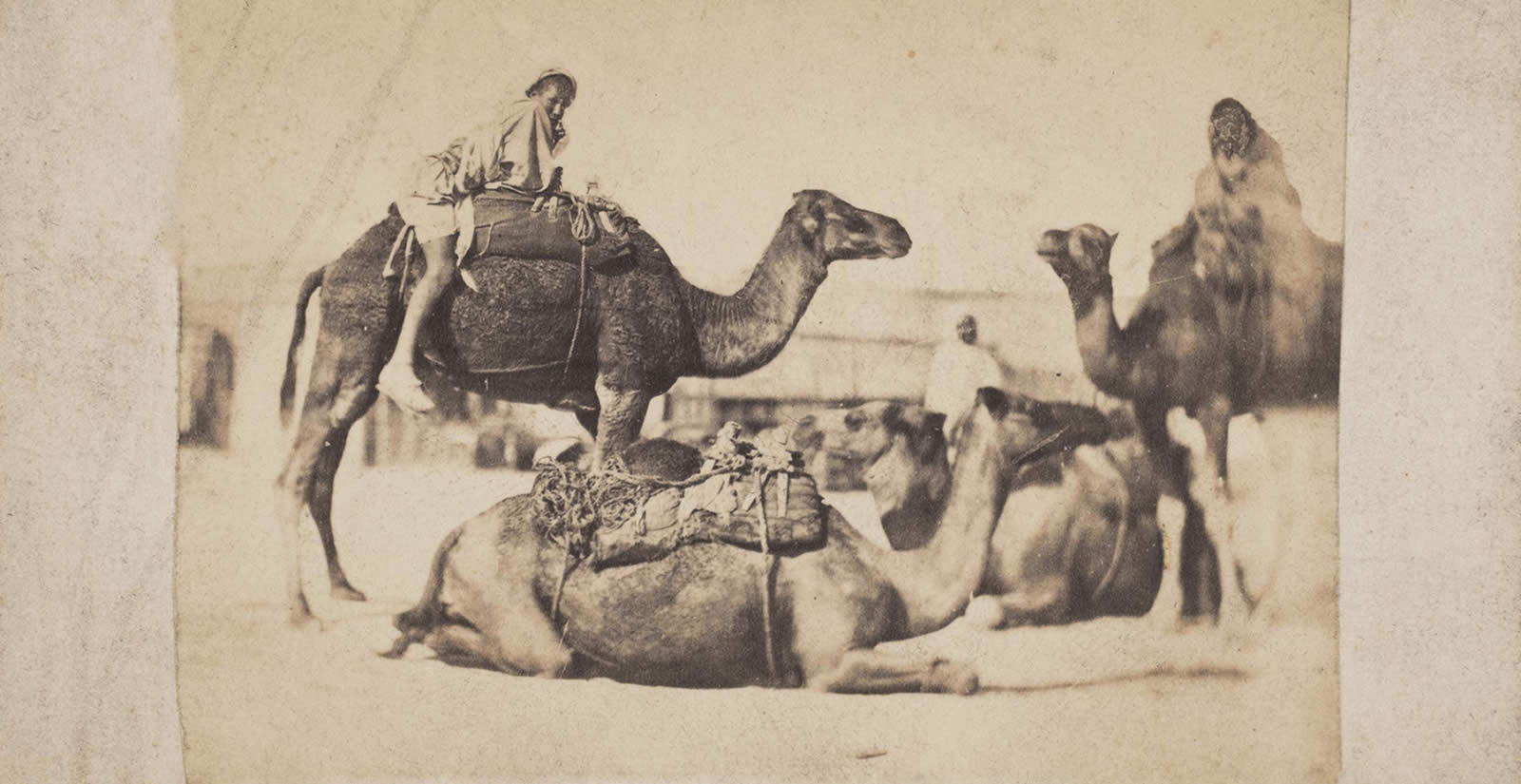
The Art of Saddling a Camel
- Arts & Culture
Written by Doug Baum
Photographed by Nick Keller
From the earliest days of domestication, the camel has presented a unique challenge: How do you ride an animal with a hump in the middle of its back?

“This is the way my father and grandfather did it,” says Adel Hamza, 55, who has offered camel rides to tourists at Egypt’s pyramids since he was a boy.
“We’re too busy working to study why something is the way it is,” says Mohammed Abd Elhay, a veterinarian in Cairo who has worked with camels.
Richard Bulliet, in his 1975 book, The Camel and the Wheel, points out that the first camel saddle was likely a blanket or an arrangement of mats, across which the weight of an equalized load on left and right could be placed.
The dromedary (one-humped) camel allows a rider to sit in front of, on top of, or behind the hump; the Bactrian (two-humped) camel is saddled between humps. It is not surprising, then, that camel saddles vary as much as the cultures that make them and the work the camels do, as well as the resources available for fabrication. Generally, in regions where wood is plentiful, one finds larger contraptions; in less resource-rich areas, designs tend to be minimalist.


It was probably in Babylonia and Assyria that camel cultures first came into contact with horse cultures, and the horse’s superiority in warfare likely gave rise to the North Arabian saddle, which is situated on top of the hump—the best position from which to fight with spear and sword. This saddle is supported by a pair of wool or canvas pads, one on each side of the hump, stuffed with grass, palm fiber or straw that level the contours of the camel’s back. Centered and closer to the camel’s head, the rider gains control.


Fully bedecked, a camel carrying a Bedouin can be quite a sight. On a trek a few years ago, my Bedouin travel companion Saleh, 55, and I met a young man riding high on a camel fitted with tassels hanging from every possible place. The halter had an ornate knot of goat hair over the bridge of the nose, and the meerika was shiny and new. I asked Saleh why our camel lacked such accoutrement. He replied, “I am old and married. He’s still young and looking for a wife!”

“Specialized craftsmen take three to four months combining wood and leather to create each saddle,” says Tuareg nomad Sidi Amar Taoua. Sometimes small copper bells hang from the saddle, and the varied artistic expressions give clues to region and tribe, he adds.



These technologies are far from all. As the roles of camel cultures diminish worldwide, the art and engineering of camel saddlery offers windows into the history of cultures that bear a deeper gaze.
You may also be interested in...

Vibrant Portraits: A Conversation With Maliha Abidi
Arts & Culture
After growing up in Karachi, Pakistan, and moving to California as a teenager, artist and author Maliha Abidi found it difficult to find stories of women who looked like her or with whom she felt she could identify.
Latino Muslims - Reclaiming a New World
Arts & Culture
In Houston, Texas, IslamInSpanish serves as a home for Latino Muslims, a distinct minority within a minority in the United States. The growing demographic group maintains the unique traits of cultures that make up Latin America while embracing the influences of language, food and hospitality found in the practice of Islam in the Old World.
Cultural Canvas: Henna Inks Its Rise in the West
Arts & Culture
The smell of eucalyptus and lavender oil mingles with the earthy aroma of henna paste lingering in the room. Jaya Robbins’s hands, already stained with henna on the tips, carefully pour a freshly made paste into a plastic pastry bag atop a large cup covered with a single pantyhose sock.